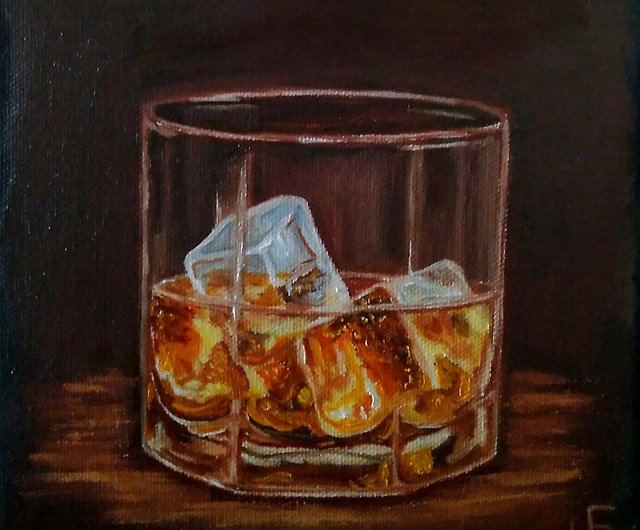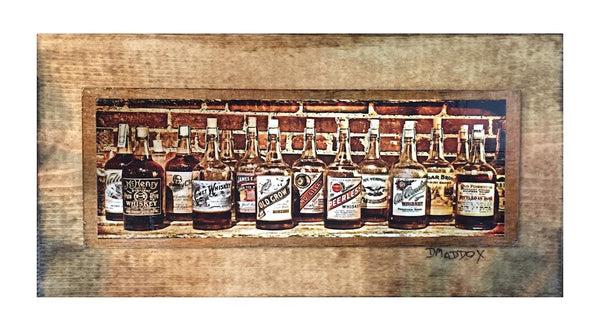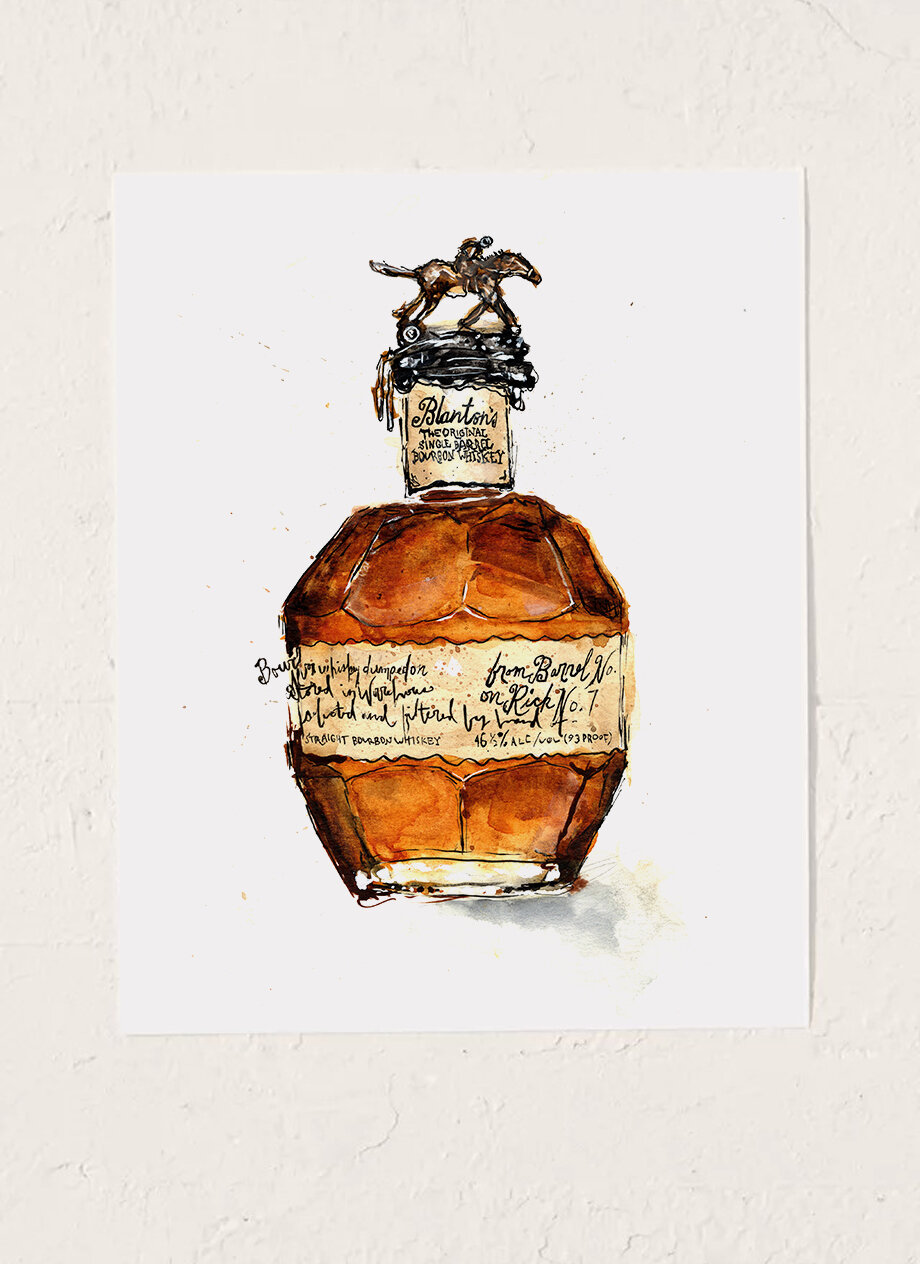Unveiling the Charm of Bourbon Art: A Homage to Craft Distillers
Wiki Article
The Relevance of Whiskey Art in Celebrating Heritage and Craftsmanship in the Beverage Sector
The elaborate partnership between bourbon art and the event of heritage and workmanship within the drink market can not be overemphasized. Via attentively designed bottles and labels, whiskey brands encapsulate their historical roots and the artisanal skills that specify their production methods. This imaginative dimension not just enhances market appeal but likewise offers as a channel for social narration, fostering a much deeper connection between the craft and the consumer. As we explore the various facets of this topic, fascinating questions regarding the effect of contemporary patterns on conventional methods occur, prompting additional examination.The Historical Roots of Whiskey
At the heart of scotch's appeal lies an abundant tapestry of historical roots that map back to ancient civilizations. The origins of whiskey can be connected to the distillation techniques of the Sumerians and Babylonians around 2000 BCE, where very early types of fermented grain drinks started to arise. Nevertheless, it remained in the Middle Ages that the art of distillation developed considerably, especially in Ireland and Scotland, resulting in the creation of bourbon as we understand it today.
The term "scotch" itself acquires from the Gaelic word "uisce beatha," suggesting "water of life." This expression highlights the social value of whiskey in Celtic cultures, where it was frequently related to rituals, events, and public bonding. By the 15th century, purification became an acknowledged craft within reclusive communities, leading the way for the facility of lawful distilleries.
As trade paths expanded, bourbon's popularity expanded, going beyond regional borders and catching the interest of connoisseurs worldwide. Limited Edition. This historical journey reflects not just the craftsmanship behind whiskey production however additionally its essential duty in social and social contexts, marking it as a substantial beverage throughout background
Artistic Expression in Branding
Scotch branding stands as a compelling crossway of virtuosity and commerce, where visual identification plays a crucial function fit customer perception. The appearances of whiskey labels, product packaging, and marketing materials show not just the brand name's tale but likewise its core worths and heritage. Through imaginative expression, distilleries share a narrative that resonates with consumers, evoking feelings and sparking connections.The use of color, typography, and imagery in branding serves to separate products in a saturated market. For example, typical motifs might evoke a sense of credibility and workmanship, while modern-day styles can represent advancement and forward-thinking. This critical imaginative direction enhances brand name acknowledgment and loyalty, enabling customers to create a personal connection with the scotch they select.
Additionally, creative expression in branding typically works as an event of regional heritage. Distilleries frequently include regional icons or historical references right into their layouts, producing a local color that welcomes consumers to take part in a more comprehensive social experience. Inevitably, the virtuosity behind bourbon branding not just improves visual appeal yet likewise enhances the overall story of the brand name, fostering a much deeper recognition for the craftsmanship and heritage embedded in each bottle.
Craftsmanship in Container Style
The artistry noticeable in scotch branding extends past visual identity to encompass the workmanship associated with container layout. Each bottle functions as a vessel not simply for the spirit within, but also for the tale it tells regarding its custom, quality, and beginning. The design procedure calls for thorough attention to information, as components such as shape, material, and closure contribute dramatically to the overall perception of the scotch.Craftsmanship in container design entails selecting high-quality glass that can improve the whiskey's shade and quality, while also offering a responsive experience for the customer. The shape of the container should be both cosmetically appealing and practical, often showing the heritage of the brand name. Several distilleries choose for one-of-a-kind shapes or printed logos that stimulate a feeling of credibility and history.
Moreover, the label style and typography play a crucial role in interacting the brand name's story. Limited Edition. A well-crafted bottle not just mesmerizes the customer's eye however additionally enhances the brand name's commitment to quality and custom. In this means, the workmanship of container design ends up being an essential element of the scotch experience, merging virtuosity with a profound respect for heritage
Cultural Relevance of Bourbon Art
Commemorating custom and craftsmanship, the cultural relevance of whiskey art transcends mere aesthetic appeals, linking with the historic and social stories of the areas where it comes from. Each bottle acts as a canvas, illustrating Bourbon Art the unique stories, folklore, and traditions that have shaped local whiskey-making methods. The complex styles often reflect the heritage of the distillers, incorporating symbols and motifs that reverberate with the culture and values of their neighborhoods.
In addition, bourbon art plays an essential duty in common events and parties, serving as a concrete web link between individuals and their shared experiences. By valuing the virtuosity in whiskey packaging, consumers grow a much deeper understanding and respect for the craft, ultimately enhancing their satisfaction of the drink itself.
Modern Trends in Whiskey Presentation
In current years, the discussion of bourbon has developed to show modern tastes and patterns while still recognizing traditional craftsmanship - Whiskey Art. Distilleries are progressively concentrating on visual elements that enhance the total alcohol consumption experience, bridging the void between heritage and modernityInnovative bottle layouts have emerged, frequently integrating sustainable materials and creative labels that tell compelling stories. Numerous brands now work together with regional musicians, infusing their items with distinct aesthetic expressions that resonate with consumers. Furthermore, limited-edition releases are frequently packaged in collectible containers, adding value and appeal for connoisseurs.

Final Thought
In conclusion, whiskey art serves as a vital conduit for expressing the heritage and workmanship integral in the drink market. With complex branding, cutting-edge container layouts, and culturally substantial artistic components, bourbon brand names successfully honor their traditions and connect with customers.

Workmanship in container layout involves choosing top notch glass that can improve the bourbon's color and clearness, while likewise supplying a responsive experience for the customer. In this way, the craftsmanship of bottle style comes to be a vital aspect of the scotch experience, merging artistry with a profound regard for heritage.
In final thought, scotch art offers as an essential conduit for revealing the heritage and workmanship integral in the beverage sector.
Report this wiki page